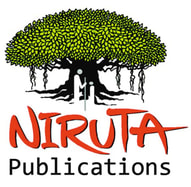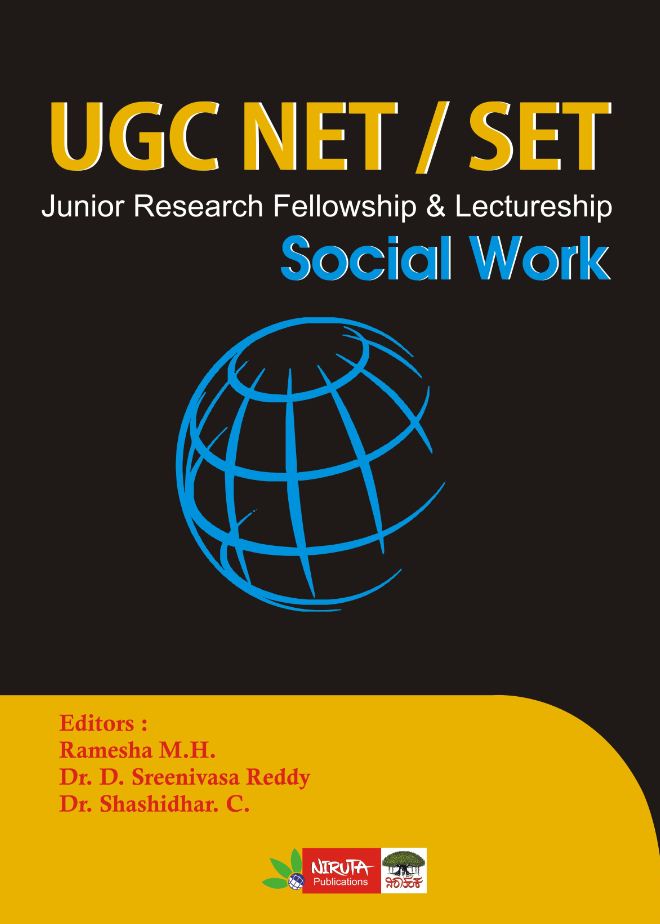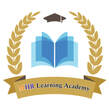|
Note : This paper contains fifty (50) objectives type questions of two (2) marks each. All questions are compulsory. 1. Which one of the following is not an indicator of social development of a country ? (A) Infant mortality rate (B) Average life span (C) Incidence of litigation in the courts (D) Literacy rate 2. The Child Marriage Restrain Act was enacted in the year (A) 1929 (B) 1930 (C) 1931 (D) 1932 3. The best example of verbal communication skill is
(A) Good vocabulary (B) Competence in oral presentations (C) Fluent speech (D) Participate in training and research 4. Acceptance is a principle of social work which implies (A) Accepting client in his/her appearance. (B) Extending warm welcome to the client. (C) Accepting the client as he/she is (D) Accepting the client’s version as it is. 5. ‘Mongolism’ is the type of (A) Geographical division of land (B) Topographical structure (C) Mental retardation (D) A religious sect 6. What is Anuloma marriage ? (A) Higher caste man marrying lower caste women (B) Higher caste women marrying lower caster man (C) Lower caste man marrying higher caste women (D) Lower caste women marrying higher caste man 7. Identity v/s role confusion is the task of (A) Adulthood (B) Oral stage (C) Old age (D) Adolescence 8. The Rio Earth Summit of 1992 dealt with the theme (A) Sustainable development (B) Climate change (C) Poverty reduction (D) Agricultural development 9. Match the following names of the books given in List – I with the authors given in List – ii and select answer from the codes given below ;: List – I (Book) List – II (Author) a. Social Work Education and Social Work Practice in India i. B. Kuppuswamy b. An Introduction to Social Psychology ii. T.K. Nair c. Social Group Work Practice iii. Polansky d. Social Work Research Methods for Helping Professions iv. Wilson and Ryland Codes : (a) (b) (c) (d) (A) (iii) (iv) (i) (ii) (B) (ii) (i) (iv) (iii) (C) (iv) (ii) (i) (iii) (D) (iii) (iv) (ii) (i) 10. Assertion (A) : Sigmund Freud claims that sex instinct is the source of all human endeavours. Reason (R) : Social psychologists have tried to explain human behavior in terms of instincts. Codes : (A) Both (A) and (R) are true. (B) Both (A) and (R) are not true. (C) (A) is true, but (R) is not true. (D) (A) is not true, but (R) is true. 11. Assertion (A) : Social work profession recognizes the family as an important system in its own right. Reason (R) : The family as a unit is worthy of study and intervention. Codes : (A) Both (A) and (R) are true, but (R) is not the correct explanation of (A). (B) Both (A) and (R) are true and (R) is the correct explanation of (A). (C) Both (A) and (R) are false. (D) (A) is true, but (R) is false. 12. Match the following : List – I List – II a. Payment of Bonus Act i. 1936 b. Payment of Gratuity Act ii. 1948 c. Payment of Wages Act iii. 1965 d. Minimum Wages Act iv. 1947 v. 1972 Codes : (a) (b) (c) (d) (A) (iii) (v) (i) (ii) (B) (iv) (v) (ii) (i) (C) (v) (ii) (iv) (iii) (D) (ii) (iii) (v) (i) 13. Mandatory testing for HIV/AIDS can be done when (i) Government wants it (ii) One wants to know about HIV/AIDS patients in the population. (iii) Regular medical checkups are held (iv) During blood donation Codes : (A) (i) and (ii) are correct. (B) (ii) and (iii) are correct (C) (iii) and (iv) are correct. (D) Only (iv) is correct 14. Which of the following does not threaten internal validity? (A) Maturation of passage of time (B) History (C) Instrumentation (D) Randomization 15. The hypothesis by which the researcher not only asserts that the variables will be found to be related, but also predicts the direction of their relationship is called (A) One tailed (B) Two tailed (C) Null hypothesis (D) None of the above 16. Match the following : List – I (Event) List – II (Date of Observance) a. World Anti Tobacco Day i. Jan 12 b. National Youth Day ii. May 31 c. International Youth Day iii. Oct 12 d. World Girl Child Day iv. Aug 12 Codes : (a) (b) (c) (d) (A) (ii) (i) (iii) (iv) (B) (ii) (i) (iv) (iii) (C) (i) (iii) (ii) (iv) (D) (iii) (ii) (i) (iv) 17. The National Commission for Women was established in the year (A) 1957 (B) 1986 (C) 2001 (D) 1992 18. Kaka Kalelkar was associated with (A) Scheduled Caste Commission (B) Scheduled Tribe Commission (C) Backward Classes Commission (D) Minorities Commission 19. The method by which the relative worth of Jobs in an organization is determined is called as (A) Job Description (B) Job Evaluation (C) Job Specification (D) Job Analysis 20. Arrange the following Acts in order in which they were enacted. Use the code given below : (i) The ESI Act (ii) The Provident Fund Act (iii) The Maternity Benefit Act (iv) Workmen’s Compensation Act Codes : (a) (b) (c) (d) (A) (ii) (i) (iv) (iii) (B) (i) (iv) (ii) (iii) (C) (iv) (i) (ii) (iii) (D) (iv) (i) (iii) (ii) 21. Cognitive needs’ of Human beings are the needs (A) To develop abilities (B) For symmetry, order and beauty (C) For security and freedom from attack (D) To know, to understand and to explore 22. ‘Learned helplessness’ is a concept based on (A) Unconditional positive learning (B) Social learning Theory (C) Hypothetical constructs (D) Psychoanalytic approach 23. Match the following : List – I List – II a. Social investigation report i. Medical social work b. Discharge planning ii. Child guidance centre c. Workmen’s compensation iii. Probation d. Behavioural problems iv. Social security Codes : (a) (b) (c) (d) (A) (iii) (i) (iv) (ii) (B) (i) (iv) (ii) (iii) (C) (iv) (iii) (ii) (i) (D) (i) (ii) (iii) (iv) 24. Which one of the following is not necessary for project formulation ? (A) Setting objectives and targets (B) Design of strategies (C) Identification of potential obstacles (D) Documentation 25. FCRA stands for (A) Foreign Contribution(Rules)Act (B) Foreign Contribution(Regulation) Act (C) Federal Contribution(Regulation) Act (D) None of the above 26. Match items in List – I with List – II and choose the correct answer from the codes given below List – I (Method) List – II (Technique) a. Social case work i. Funnelling b. Social group work ii. Gherao c. Community organization iii. Person situation configuration d. Social action iv. Norming and Storming Codes : (a) (b) (c) (d) (A) (ii) (iv) (iii) (i) (B) (iii) (iv) (i) (ii) (C) (i) (iii) (iv) (ii) (D) (iv) (ii) (iii) (i) 27. Which one of the following is not a treatment group ? (A) Growth group (B) Socialisation group (C) Educational group (D) Study team 28. Indecent Representation of Women(Prohibition) Act was enacted in year (A) 1976 (B) 1986 (C) 1996 (D) 2006 29. Which of the following governance mechanism is the highest body for policy formulation in NGO;s ? (A) General body (B) Managing Committee (C) Sub Committee (D) Chairperson 30. match the items in List – I with items in List – II and choose the correct answer from the codes given below : List – I (Author) List – II (Method/approach) a. Octavia Hill i. Problem solving approach b. Murry G. Ross ii. Social Group Work c. H.H. Perlman iii. Community organization d. Gisela Konopka iv. Housing reforms Codes : a b c d (A) ii iii iv i (B) iii iv i ii (C) iv iii I ii (D) i ii iii iv 31. Objectively in research menas the willingness and ability to examine evidence dispassionately is called (A) spirit de corps of the scientific method (B) cours de philosophic of the scientific method (C) la carrier of the scientific method (D) sine qua non of the scientific method 32. In participatory development, people’s participation is (A) an end, not just a means to development (B) only a means to development (C) neither an end nor a means to development (D) only a means not an end to development 33. If the client persists in verbal attacks, the technique used is (A) Confrontation (B) Scanning (C) Fogging (D) Explaining 34. ‘Power is gained whereas ‘authority’ is (A) acquired (B) possessed (C) imposed (D) nested 35. The point where two axes intersect is known as (A) X axis (B) Y axis (C) Origin (D) Table 36. The value that is repeated most often in data set is known as (A) Median (B) Mode (C) Frequency (D) Variance 37. Who among the following is said that justice is crucial to understand human rights? (A) Peterson (B) John Rawl (C) Smith (D) Stephenson 38. The Universal Declaration of Human Rights was adopted in (A) 1944 (B) 1945 (C) 1947 (D) 1948 39. Assertion (A) : Maintaining case-files is an important duty of a psychiatric social worker. Reason (R) : Case files are important sources of data collection in mental health research. Codes : (A) Both (A) and (R) are true. (B) (A) is true and (R) is not the correct explanation of (A) (C) Both (A) and (R) are not true (D) Both (A) and (R) are true and (R) is the correct explanation of (A) 40. Assertion (A) : Human Resource Manager have to be a good human being. Reason (R) : Human values and ethics should be essential part of management education. Codes : (A) (A) is correct and V is not the correct explanation of (A). (B) (A) is correct and (R) is the correct explanation of (A) (C) (A) is not correct but (R) is the correct explanation of (A) (D) Both (A) and (R) are not correct. 41. Assertion (A) : When professional social work ingrains itself, in a practice modes, it can reduce the enormity of social problems in a given society. Reason (R) : Unless professional social workers develop competences and convictions, they cannot address complex social problems Codes : (A) (A) is true but (R) is not true. (B) (A) is not true but (R) is true. (C) Both (A) and (R) are true. (D) Both (A) and (R) are not true. 42. A set of guidelines that give direction to action by an organization or government is called (A) Social policy (B) Social planning (C) Social principles (D) Strategic planning 43. Match the following fears with their technical names : List – I List – II a. Hydrophobia 1. Fear of heights b. Nictophobia 2. Fear of darkness c. Acrophobia 3. Fear of Water d. Pyrophobia 4. Fear of fire Codes : a b c d (A) 3 2 4 1 (B) 2 3 1 4 (C) 2 3 4 1 (D) 3 2 1 4 44. Assertion (A) : Drug abuse has been on the increase. Reason (R) : The control of family and intergenerational communication is declining. Codes : (A) (A) is true and (R) is not true. (B) Both (A) and (R) are not true. (C) Both (A) and (R) are true, but (R) is not the explanation of (A) (D) (A) is true and (R) is the correct explanation of (A) 45. The F-test is a (A) Parametric test (B) Non-parametric test (C) Discriminant analysis (D) Health status test Read the passage given below and answer the following questions as per the understanding of the passage (Question Nos. 46 to 50) History has led to vast inequalities, leaving almost three-fourths of the world’s people living in less-developed countries and one-fifth below the poverty line. The long-term impact of past industrialization, exploitation and environmental damage cannot be wished away. It is only right that development in this new century be even more conscious of its long-term impact. The problems are complex and the choices difficult. Our common future can only be achieved with a better understanding of our common concerns and shared responsibilities. Poverty and a degraded environment are closely inter-related, especially where people depend for their livelihoods primarily on the natural resource base of their immediate environment. Restoring natural systems and improving natural resource management practices at the grassroots level are central to a strategy to eliminate poverty. The survival needs of the poor force them to continue to degrade an already degraded environment. Removal of poverty is therefore a prerequisite for the protection of the environment. Poverty magnifies the problem of hunger and malnutrition. The problem is further compounded by the inequitable access of the poor to the food that is available. It is therefore necessary to strengthen the public distribution system to overcome this inequity. Diversion of common and marginal lands to ‘economically useful purposes’ deprives the poor of a resource base which has traditionally met many of their sustenance needs. Literacy and a basic education are essential for enabling the poor to access the benefits offered by development initiatives and market opportunities. Basic education is therefore a precondition for sustainable development. A sizeable proportion (about 60 percent according to some estimates) of the population is not integrated into the market economy. Ensuring the security of their livelihoods is an imperative for sustainable development. In several areas, desirable limits and standards for consumption need to be established and applied through appropriate mechanisms including education, incentives and legislation. Several traditional practices that are sustainable and environment friendly continue to be a regular part of the lives of people in developing countries. It is therefore important to evaluate and make development decisions which structurally lead to a more sustainable society. 46. How can we achieve our common future in a sustainable development framework? (i) Understanding the long term impact of past industrialization. (ii) Preventing environmental damage. (iii) Understanding common concerns and shared responsibilities. (A) (i) and (ii) are correct (B) (ii) and (iii) are correct (C) (iii) and (i) are correct (D) (i), (ii) and (iii) are correct 47. What are central to a strategy to eliminate poverty and thereby ensuring sustainable development? (A) Industrialization (B) Exploitation of National Resources (C) Restoring natural Systems (D) Encouraging Market Economy 48. How does the survival needs of poor people affect sustainable development? (A) Diversion of common and marginal lands to economically useful purposes. (B) Poverty magnifies the problem of hunger and malnutrition (C) Continue to degraded the already degraded environment (D) None of the above 49. What are essentials for enabling the poor to access the benefits offered by development initiatives and market opportunities ? (i) Ensuring security of livelihoods (ii) Improving literacy and basic education (iii) Encouraging unsustainable patterns of consumption (iv) Increasing purchasing power (A) (i), (ii) and (iii) are correct (B) (i), (ii) and (iv) are correct (C) (ii), (iii) and (iv) are correct (D) (iii), (iv) and (i) are correct 50. What needs to be encouraged to ensure sustainable development ? (A) Market driven technology (B) Environment friendly traditional practices (C) Consumption oriented economy (D) All the above
0 Comments
Your comment will be posted after it is approved.
Leave a Reply. |
UGC NET Training for
Social Work We are pleased to announce the training programme on “UGC NET Social Work”. The details of which are as under. It covers in detail the UGC NET Social Work syllabus and previous question papers.
Categories
All
|
SITE MAP
SiteTRAININGJOB |
HR SERVICESOTHER SERVICESnIRATHANKA CITIZENS CONNECT |
NIRATHANKAPOSHOUR OTHER WEBSITESSubscribe |
MHR LEARNING ACADEMY
50,000 HR AND SOCIAL WORK PROFESSIONALS ARE CONNECTED THROUGH OUR NIRATHANKA HR GROUPS.
YOU CAN ALSO JOIN AND PARTICIPATE IN OUR GROUP DISCUSSIONS.
YOU CAN ALSO JOIN AND PARTICIPATE IN OUR GROUP DISCUSSIONS.
|
|


 RSS Feed
RSS Feed





